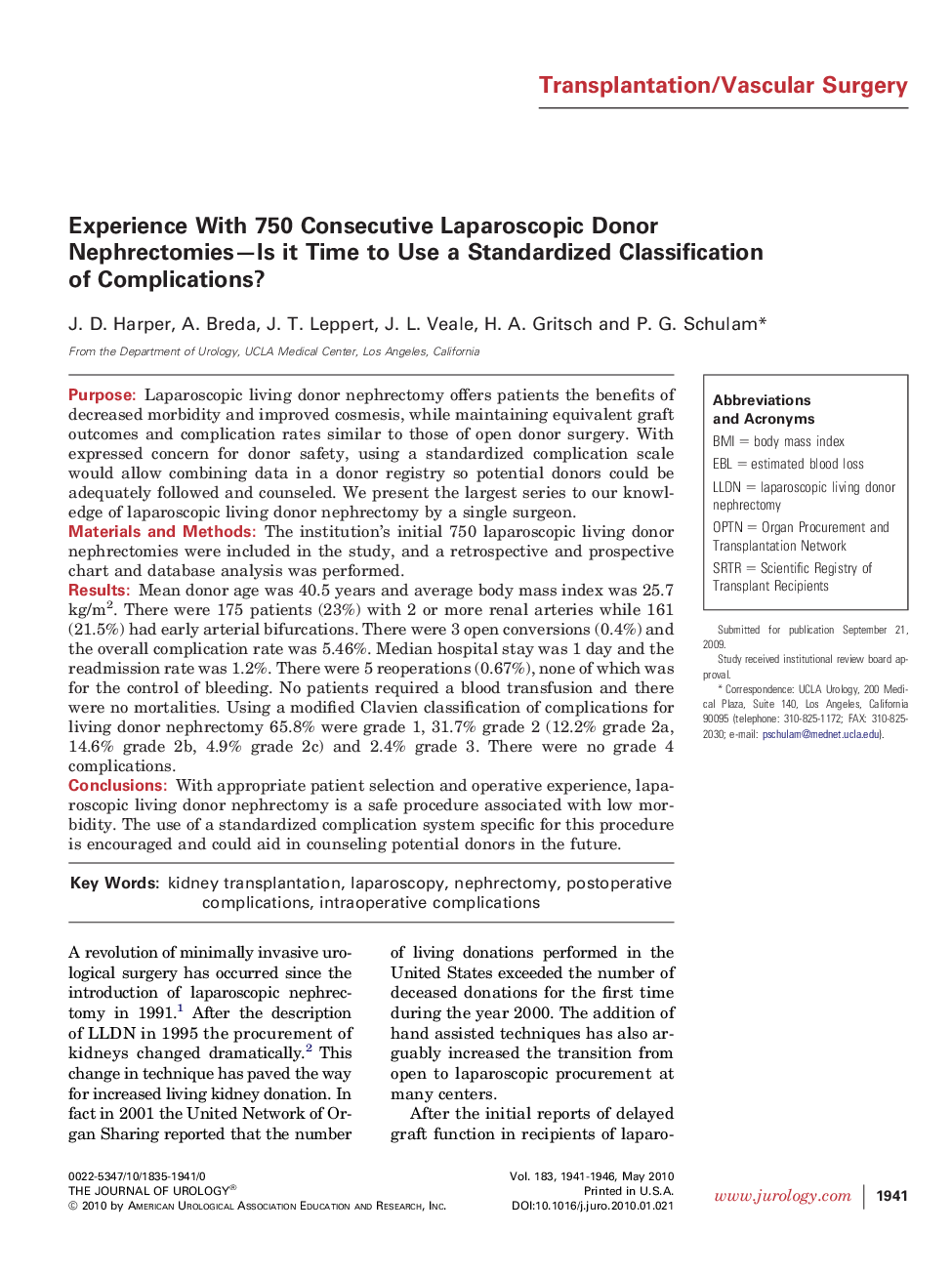| Article ID | Journal | Published Year | Pages | File Type |
|---|---|---|---|---|
| 3866540 | The Journal of Urology | 2010 | 6 Pages |
PurposeLaparoscopic living donor nephrectomy offers patients the benefits of decreased morbidity and improved cosmesis, while maintaining equivalent graft outcomes and complication rates similar to those of open donor surgery. With expressed concern for donor safety, using a standardized complication scale would allow combining data in a donor registry so potential donors could be adequately followed and counseled. We present the largest series to our knowledge of laparoscopic living donor nephrectomy by a single surgeon.Materials and MethodsThe institution's initial 750 laparoscopic living donor nephrectomies were included in the study, and a retrospective and prospective chart and database analysis was performed.ResultsMean donor age was 40.5 years and average body mass index was 25.7 kg/m2. There were 175 patients (23%) with 2 or more renal arteries while 161 (21.5%) had early arterial bifurcations. There were 3 open conversions (0.4%) and the overall complication rate was 5.46%. Median hospital stay was 1 day and the readmission rate was 1.2%. There were 5 reoperations (0.67%), none of which was for the control of bleeding. No patients required a blood transfusion and there were no mortalities. Using a modified Clavien classification of complications for living donor nephrectomy 65.8% were grade 1, 31.7% grade 2 (12.2% grade 2a, 14.6% grade 2b, 4.9% grade 2c) and 2.4% grade 3. There were no grade 4 complications.ConclusionsWith appropriate patient selection and operative experience, laparoscopic living donor nephrectomy is a safe procedure associated with low morbidity. The use of a standardized complication system specific for this procedure is encouraged and could aid in counseling potential donors in the future.
